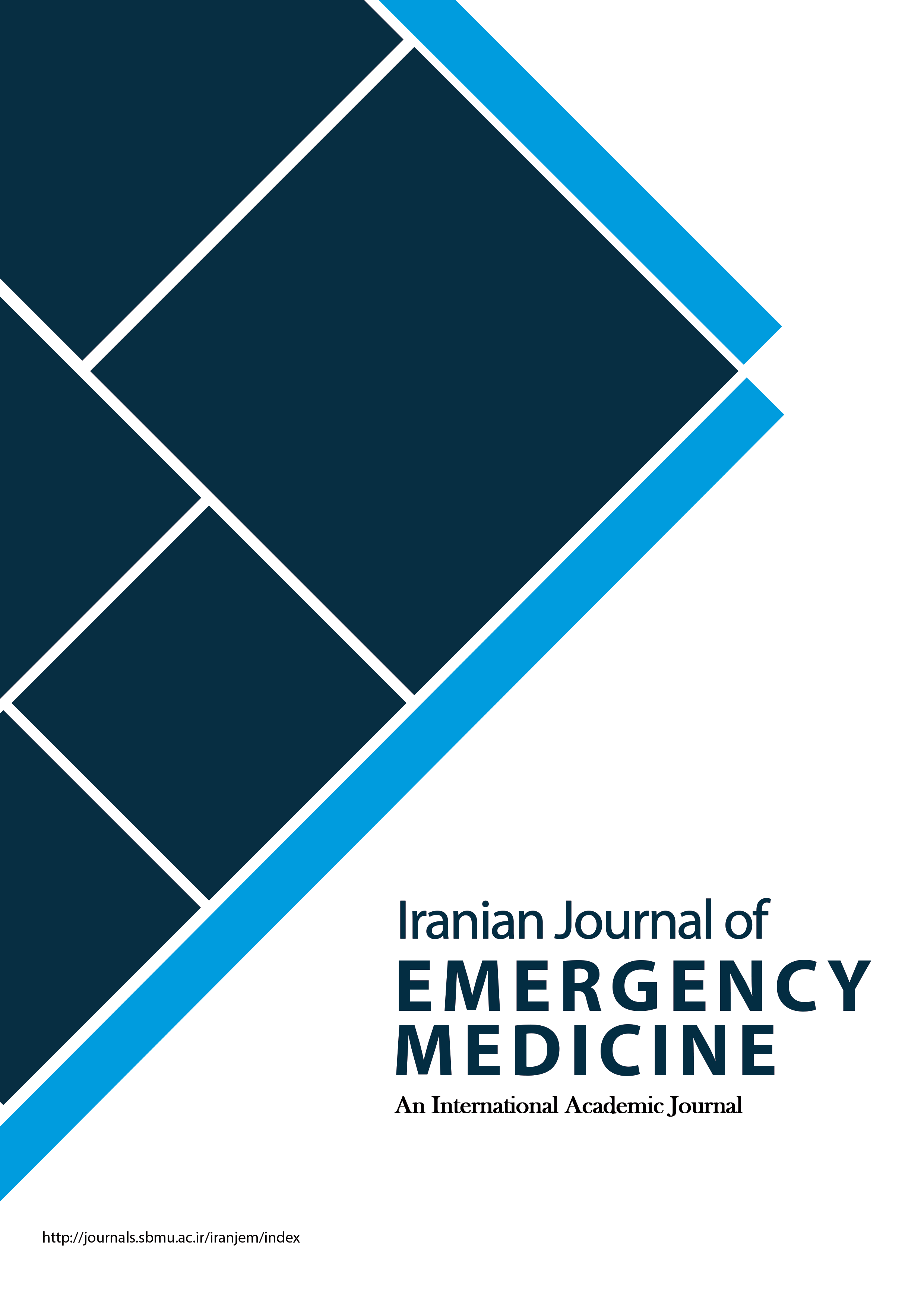Platelet Count in Patients with Acute Coronary Syndrome
Iranian Journal of Emergency Medicine,
Vol. 5 No. 1 (2018),
8 February 2018
,
Page e1
https://doi.org/10.22037/ijem.v2i1.18584
Abstract
Platelets play an important role in pathogenesis of coronary artery obstruction. Acute coronary syndromes are associated with endothelial injuries, atherosclerotic plaque rupture, platelet activation, thrombosis formation and finally artery obstruction. Platelets are activated by attachment to the subendothelial structure and release granules containing A2 Thromboxane, serotonin, vasoconstrictors and platelet aggregation factors.
Increased platelet activity has been associated with higher severity of ischemic cardiac disease. It has been shown that patients with cardiac ischemia who have a higher platelet count are more at risk of mortality. A study by Shefaee et al. in 2005 showed that platelet count change in those with acute coronary syndrome is significant; in these individuals, platelets decrease at the site of lesion due to being used up. In other words, patients with acute coronary syndrome have a lower platelet count compared to those with stable angina and normal people. Zhang et al. study in 2015 showed that platelet count in patients with unstable angina and myocardial infarction decreases more compared to patients with chronic stable angina and those with non-cardiac chest pain. The writers of this letter studied 180 patients with the mean age of 55.57 ± 15.11 years (20-86) and compared the number of platelets in 3 groups of non-cardiac chest pain (60 cases), stable cardiac angina (60 cases) and unstable cardiac angina or myocardial infarction (60 cases). Mean platelet count in the 3 mentioned groups was 258.73 ± 62.92, 238.95 ± 65.88 and 218.78 ± 47.82 thousand/µl, respectively (p = 0.001). As you can see, the number of platelets in the group with unstable angina was significantly lower in this comparison, too. However, the important point is that in all these cases platelet count is in the normal range (150-400 thousand/µl) and perhaps considering the number of platelets alone cannot help in differentiation of this group of patients. It seems that measuring substances released from platelet instead of considering platelet count can be more helpful in differentiating the 3 mentioned conditions. However, reaching a decision regarding the correlation of rate and pattern of platelet decrease with various states of coronary syndrome needs more accurate studies with bigger sample sizes.How to Cite
References
Corash L, Tan H, Gralnick HR. Heterogeneity of human whole blood platelet subpopulations. Relationship between buoyant density, cell volume, and ultrastructure. Blood. 1977;49(1):71-87.
Thaulow E, Erikssen J, Sandvik L, Stormorken H, Cohn PF. Blood platelet count and function are related to total and cardiovascular death in apparently healthy men. Circulation. 1991;84(2):613-7.
Shefaee S, Saravi M, Sharbatdaran M, Hajian K, Mesbah N. Evaluation of platelet indices and count in patients with ischemic heart disease compared to normal population. Journal Of Babol
University Of Medical Sciences 2005;7(2):48 - 54.
Ranjith M, Divya R, Mehta V, Krishnan M, KamalRaj R, Kavishwar A. Significance of platelet volume indices and platelet count in ischaemic heart disease. Journal of clinical pathology. 2009;62(9):830-3.
Zhang Z, An L, Du D, Lai X, Wang F, Li Y. The change in platelet count in patients with acute coronary syndrome 6 months after coronary stent implantation. Blood Coagulation & Fibrinolysis. 2015;26(6):661.
- Abstract Viewed: 2228 times
- PDF (فارسی) Downloaded: 290 times
- HTML (فارسی) Downloaded: 17 times



